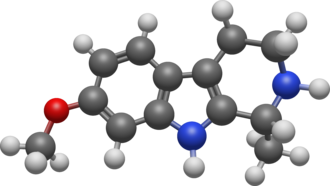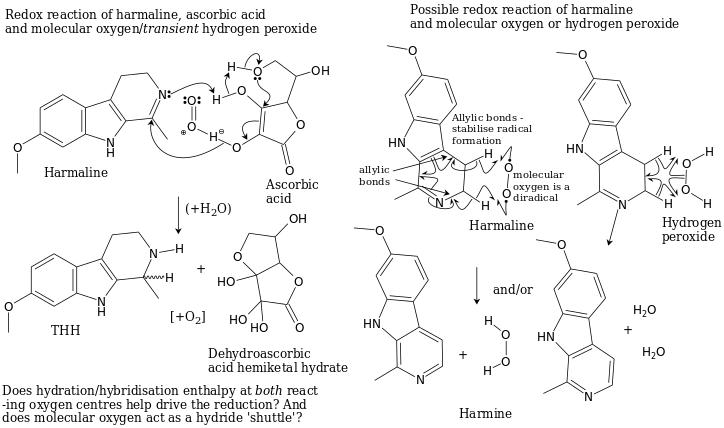Difference between revisions of "Tetrahydroharmine"
(→Pharmacology, toxicity and general safety) |
(→Pharmacology, toxicity and general safety) |
||
| (2 intermediate revisions by one user not shown) | |||
| Line 31: | Line 31: | ||
Thought to be metabolized similarly to other harmala alkaloids. | Thought to be metabolized similarly to other harmala alkaloids. | ||
Toxicity thought to be similar to other harmala alkaloids i.e the LD50 of haamine is 243 mg/kg SC inmice models. | Toxicity thought to be similar to other harmala alkaloids i.e the LD50 of haamine is 243 mg/kg SC inmice models. | ||
| − | Like other harmala alkaloids, THH is thought to be unsafe with certain drugs; it could potentially cause serotonin syndrome or hypertensive crisis when combined with | + | Like other harmala alkaloids, THH is thought to be unsafe with certain drugs; it could potentially cause serotonin syndrome or hypertensive crisis when combined with antidepressants, stimulants, common migraine medications, certain herbs, cold medication, opiates, nicotine and caffeine. |
| − | Note: | + | Note: There is still not enough data available to confirm pharmacology pathways, interactions and toxicity levels. |
== Plants containing THH == | == Plants containing THH == | ||
Latest revision as of 09:18, 12 February 2023
Contents
- 1 Brief overview - What is THH?
- 2 Chemical and physical properties
- 3 Effects
- 4 Pharmacology, toxicity and general safety
- 5 Plants containing THH
- 6 Conversion teks
- 7 Future Research
- 8 Dosages and consumption methods
- 9 History of usage
- 10 Analysis of THH
- 11 Scientific publications
- 12 Other links of interest
Brief overview - What is THH?
Tetrahydroharmine (THH) is a fluorescent pyschoactive indole alkaloid. It occurs naturally in B. Caapi. Like other harmala alkaloids it is a RIMA reversible inhibitor of monoamine oxidase A. However, unlike harmine and harmaline, THH also inhibits reuptake of serotonin.
Chemical and physical properties
Formula:C13H16N2O
Molar mass:216.284 g·mol−1
Solubility:
DMF: 1.5 mg/ml
PBS (pH 7.2): 0.25 mg/ml
DMSO: 2 mg/ml
Ethanol: 1.5 mg/ml
Ethyl Acetate: unknown mg/ml
Melting point: Unknown
Effects
Similar effects to other Harmala alkaloids
Pharmacology, toxicity and general safety
Thought to be metabolized similarly to other harmala alkaloids. Toxicity thought to be similar to other harmala alkaloids i.e the LD50 of haamine is 243 mg/kg SC inmice models. Like other harmala alkaloids, THH is thought to be unsafe with certain drugs; it could potentially cause serotonin syndrome or hypertensive crisis when combined with antidepressants, stimulants, common migraine medications, certain herbs, cold medication, opiates, nicotine and caffeine.
Note: There is still not enough data available to confirm pharmacology pathways, interactions and toxicity levels.
Plants containing THH
-B. Caapi
Conversion teks
Future Research
Potential reduction pathways
Dosages and consumption methods
Usually used in combination with harmine or other RIMA harmala alkaloids to create a synergistic effect. A usual adjunct to ayahuasca/ pharmahuasca. Can be used in other psychedelics combinations THH/ LSD, THH/ Psilocybin mushrooms etc.
Dose ranges 50-300mg.
History of usage
As it is found in B. Caapi, it has quite a historic and symbolistic use in traditional ayahuasca brews.
Analysis of THH
GC-MS
https://www.dmt-nexus.me/forum/default.aspx?g=posts&m=189029#post189029

